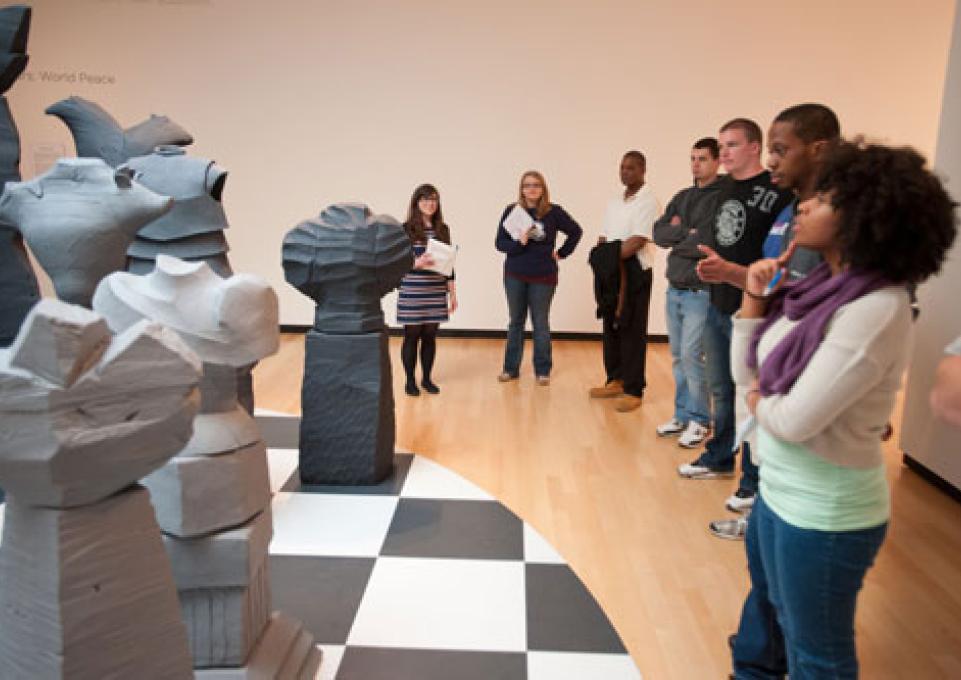
After May 2018, all students graduating from Buffalo State’s art education undergraduate program will possess a bachelor of fine arts (B.F.A.) degree rather than the current bachelor of science (B.S.).
Benefits for graduates include emerging with a concentration in one of the studio arts, along with a deeper knowledge of art history and a more advanced approach to art-making, explained Alice Pennisi, associate professor and chair of art education, and Michael Parks, art education professor and former department chair.
“Students used to minor in a studio art such as painting or ceramics. Now everyone has that concentration integrated into their program,” said Pennisi. “What was missing before was a high level of expertise in an art concentration. With the B.F.A., they can have one or more concentrations.”
While the number of art and design courses will increase, the general education requirements will go down slightly for a total of 126 course credits. Although students have the option of remaining with the current B.S. curriculum if they are graduating by May 2018, some students have already switched to the B.F.A. track.
This degree change, which has been in discussions since 2008, comes at an auspicious time for the department, which is celebrating its 85th anniversary this academic year. Since its formal establishment at Buffalo State in 1930, art education has formed partnerships with schools and the Burchfield Penney Art Center, and its faculty members have exhibited widely and garnered numerous awards. The program’s first director, Stanley Czurles, was one of the founding members of the New York State Art Teachers Association.
Through both its undergraduate and graduate programs, the department has produced thousands of teachers who have shared their love of art with students in prekindergarten through 12th grade throughout the country. Because of the department’s reputation, school districts eagerly hire Buffalo State graduates and Parks predicts that will only increase with the new degree.
With the B.F.A., students will be required to think more like artists, Parks explained, as they will be steeped in studio work as well as preparation for an art classroom. And this is attractive to many students.
“For those sitting on the fence between a studio degree and a teaching degree, they will now get both,” said Parks.
